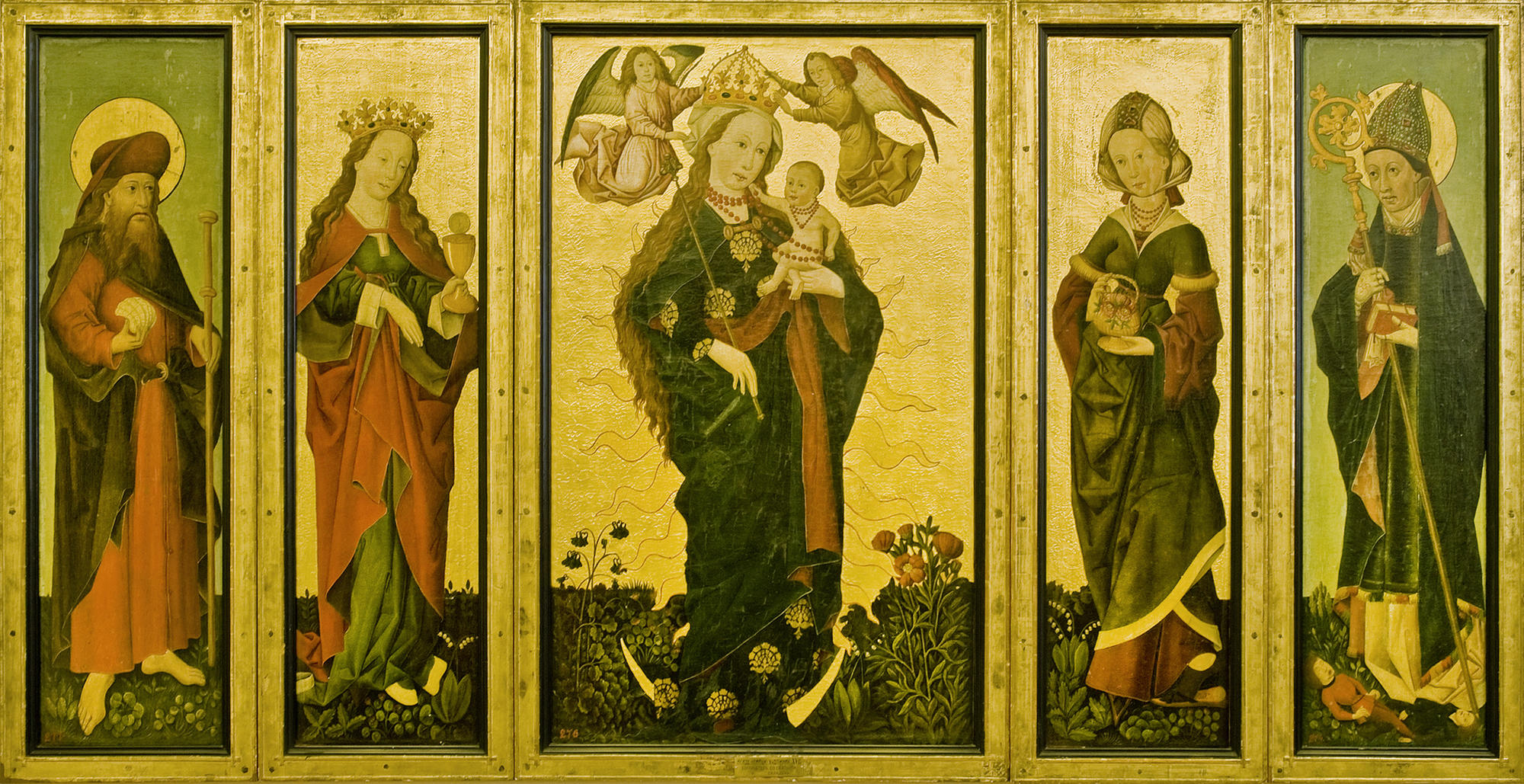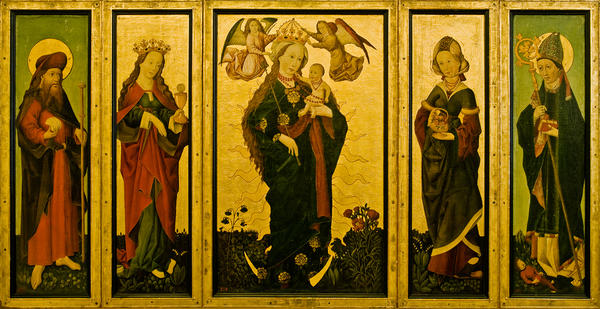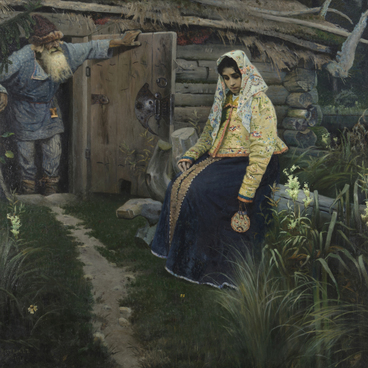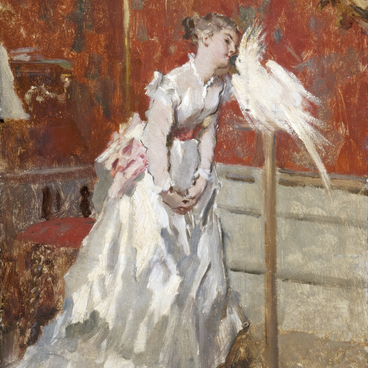We have in front of us Virgin Mary with Saints, a winged altarpiece, which consists of a centerpiece and two folding wings. It is also called a triptych, by the number of its elements. The work is dated to originate from the 15th century, and its author is unknown.
Virgin Mary with Saints
Время создания
15th century
Размер
117x71,17 cm
117×71.17×32 cm
117×71.17×32 cm
Техника
Oil and tempera on canvas
Коллекция
2
Открыть в приложении#3
An unknown German master
Virgin Mary with Saints
#1
#4
In the Middle Ages, it was a frequent occurrence for authors not to sign their pictures. They worked for the sake of God’s glory, and did not crave for fame. Therefore, it is difficult to establish authorship for art pieces of this kind.
#5
It is a certain fact that the creator of this folding icon belonged to the Swabian School, or a group of artists who worked in the south of Germany, in Swabia. The region’s art center was the city of Ulm. Local masters followed Italian traditions in painting. Their works are distinguished for the sharpness of all shapes and lines, and also for ‘simplicity and clarity of composition, harmony of color’.
#6
Initially, the altar was double-sided. The folds had different functions: The parts with the golden background were displayed on festive days, and the two outside pieces with the green background were used on weekdays. In 1885, the Imperial Hermitage restored the winged altarpiece. Its layers were separated, and its folds became equal in significance. In addition, the restorer transferred the painted surface from a decrepit board onto a new foundation.
#7
The artist depicted the Holy Mother of God as the Queen of Heaven in the middle section of the painted altarpiece. She is holding Baby Jesus in her arms. There is a crescent under her feet. Virgin Mary was portrayed as the Queen of Heaven, so quite often a crescent or the moon were appended to her image. Those symbols originate from the Bible: ‘And there appeared a great wonder in Heaven; a woman clothed with the sun, and the moon under her feet, and upon her head a crown of twelve stars’ (Rev. 12: 1).
#8
On the festive folds, the author painted two martyrs against a golden background. Those martyrs are worshipped as protectresses against violent and sudden death. On the right is Saint Barbara who holds a communion cup in her hands. On the left is Saint Dorothy with her usual attributes — a basket of fruit and flowers. Her figure was very popular in Germany in the 14th and 15th centuries.
The two outer folds comprise the everyday side of the altarpiece. On the right one, the artist painted Saint James the Great (of Compostela), one of Jesus’ Twelve Apostles. The saint was a pilgrim and reached Spain, preaching his sermons on the way. Therefore, he is holding a staff and a seashell in his hands. On the left stands Saint Valentine, a bishop, holding a book and a staff in his hands.
#9
On this winged altarpiece, every detail has a symbolic meaning. For instance, the peonies and the primulas at Virgin Mary’s feet were revered as protective charms, thistle signified Christian suffering, and violets meant humility and obedience. The crescent is also a symbol of the Holy Mother of God, and, simultaneously, implies virginity.
#10
The artist used subdued colors: red, green and golden. The everyday folds were painted in austere direct lines, to make those pictures simple and mundane. Virgin Mary and the saints in the festive part were delineated by the painter in curved lines. Altogether, they form a closed composition.
#11
This winged altarpiece was donated to the Radishchev Museum by Alexander Zvenigorodsky, an art patron. This is the only completely preserved medieval art object in the museum collection.
#12
A.N. Radishchev Saratov State Museum of Fine Arts
читать дальшескрыть
00:00
00:00
1x
Virgin Mary with Saints
Время создания
15th century
Размер
117x71,17 cm
117×71.17×32 cm
117×71.17×32 cm
Техника
Oil and tempera on canvas
Коллекция
2
Открыть в приложении
Поделиться



